I type to you from the comfort of my brand new dorm room. I’ll get into the real nitty gritty of why exactly I had to switch rooms when it’s further behind me, but I’m glad to be here. I moved in on Saturday, which involved three trips across the Stopher-Johnson bridge and resulted in veg-out levels of exhaustion. It was a worthwhile exhaustion nonetheless.
Instead of a house warming party, I did what I often do on weekend nights and indulged in music written by old men. But instead of expressing my wackjob musical taste in headphone-induced isolation, I did it in a room of other people. 15-60-75, The Numbers Band, have been playing the area for fifty three years, and this was the first time they played in Kent after I got here where I wasn’t gallivanting home on break. Besides, it was at the Kent Stage, which I’ve never been to, and it’s a much more relevant-to-me first show there than, say, Ace Frehley or Crash Test Dummies.
Knowing the Numbers’ first album, I was well aware of the group’s sound – an angsty and passionate strain of the blues-meets-jazz-meets something else entirely, with the right lick of dissonance that pinpoints their origin smack dab in the middle of the Rust Belt. There isn’t much to do in Akron, so I guess the primary solution is to make music or do drugs (or both). It’s so Pere Ubu, so “Navvy” at times, how it leaps and squelches and swells up in a big ball of noise assaulting your frail ears. I know there’s some interview where David Thomas is like, “Jimmy Bell is the ONLY GOOD SOUNDING ALBUM EVER RECORDED.” Which is a large overstatement, but it is a really good sounding album.


Their live sound reflects that to this day. The noise was crisp and loud. Every member was talented and tight. It was pretty damn stunning. Bob Kidney is a great band leader, and a hilarious one at that. Lots of great banter. A few guests came up for songs peppered throughout the night, like Chris Butler of the Waitresses and Tin Huey (seen wielding possibly the coolest bass I’ve seen since the Steinberger below)! Everyone sitting around me was older, and the woman beside me was asking me how the heck I knew who they were. (She was impressed.) Lots of name drops in the fragments of conversations that poked my head during intermission. It felt like a good ol’ time, one of many, with lots of invisible lines darting across the room like yarn strings on a bulletin board. Aside from being the youngest person in the room, I might’ve been the only person in the room who was seeing the Numbers for the first time.


It’s surreal acknowledging that there’s been this tiny scene here that’s been happening since practically the sixties but has not expanded far past its zip code, resulting in all the cool old people from back in the day being connected to everybody else and living within an approximate 50 mile radius of each other. It’s kind of fascinating, honestly, being in a vortex so rooted in its geography and persistent obscurity. My perspective as a current student definitely helps feed some fascination in it for me. In my cultural anthropology class, we’ve discussed the processes of field work – participant observation, cultural relativism, historical particularism. In Music as a World Phenomenon, I’ve read many mentions of the contributions of ethnomusicologists documenting music traditions across the globe. Does the shadow of the Goodyear Blimp fall differently than that of the steel sky birds worshiped by some remote island communities? Are all those “Punk 45” compilations less important than the “world music” CDs that hipster David Byrne fans buy to prove that they’re not only into African sounds when white guys do them? It really does feel like I’ve encountered some hidden anomaly that has somehow withstood JB’s becoming shit-kickin’ country/get crunk Brewhouse, gentrification, and things getting caught on fire. In a documentary we were shown in anthropology class, a group of linguistic historians arrived at a remote ex-Soviet village to document its language and were told, if only you’d come five years earlier, because many of that language’s most versatile speakers had died off. It’s like I’ve ended up mingling among the last great hurrah of a cultural phenom microcosm by complete accident; maybe I could’ve come at a time when the esplanade didn’t exist, but I’m here anyways with mental pen and paper. And I’m the only person of my generation who gives a crap. I’m one of the only people who gives a crap at all, really. But I guess it’s worthwhile that there’s somebody that gives a crap.
Nevertheless, 15-60-75 continue to chug away with great vigor, tucked away safe from the spotlights of the nebulous festering “classic rock” stadium blob. I do kind of love how you can see Terry Hynde, Chrissie’s brother, be extremely awesome on the saxophone for twenty dollars plus ticket fee, though. In 2023, can you beat that?

Okay, back to listening to “High Heels Are Dangerous” on repeat.

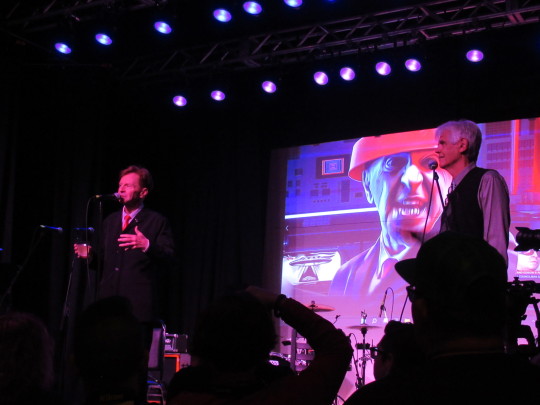
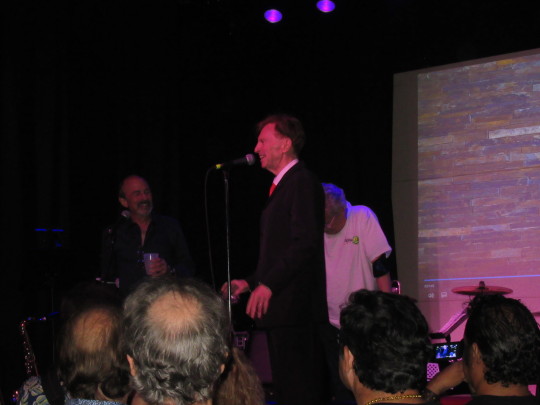
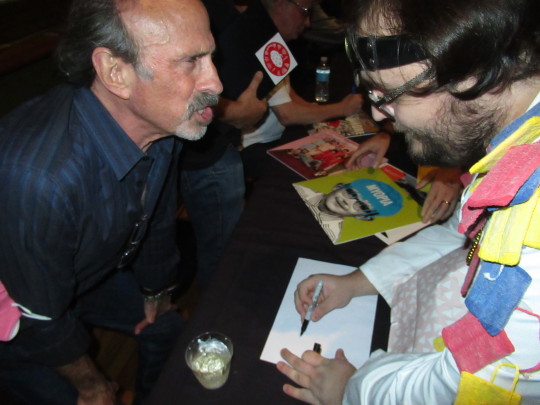
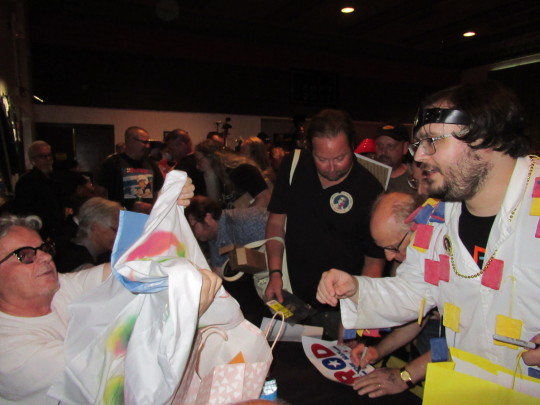
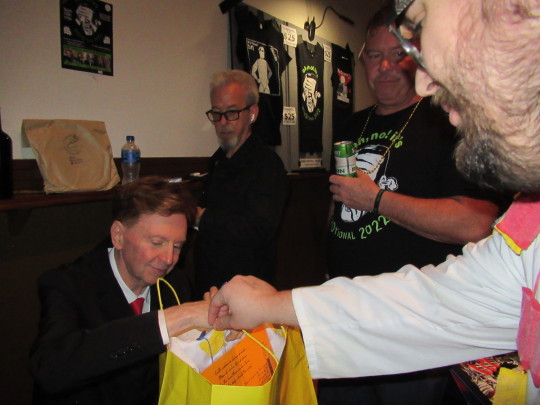
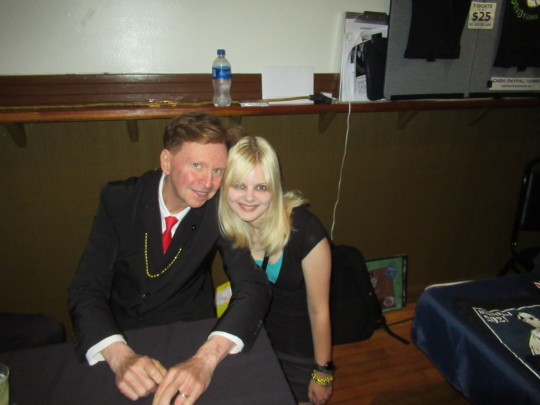
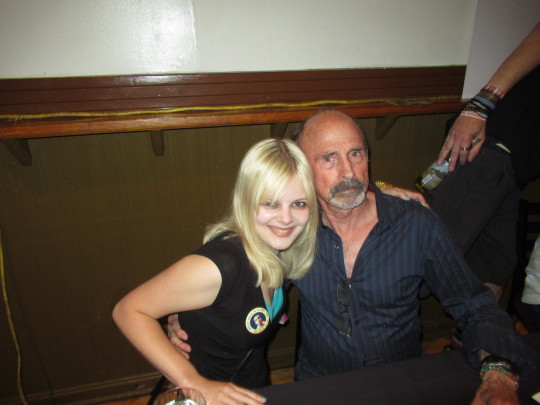
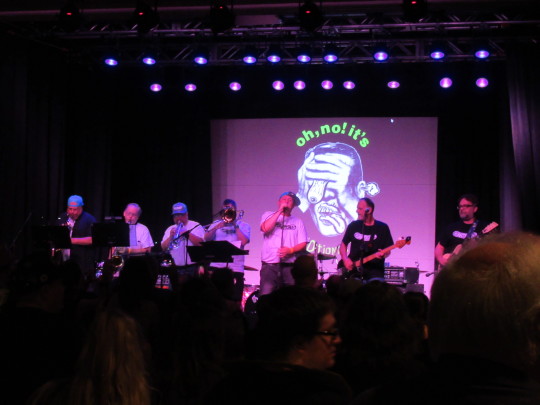
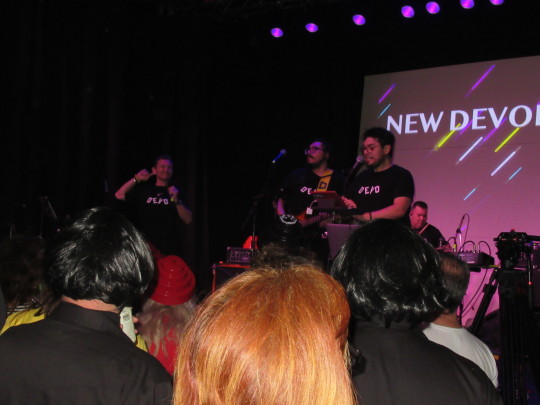

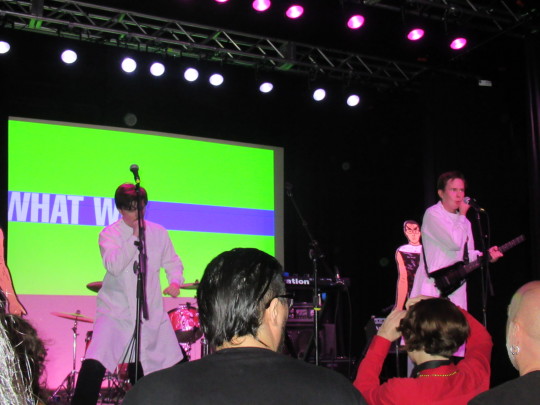
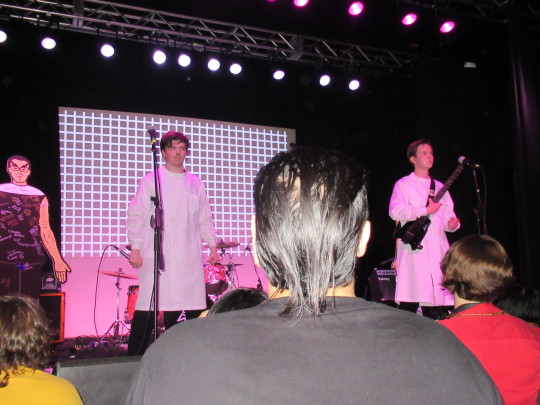
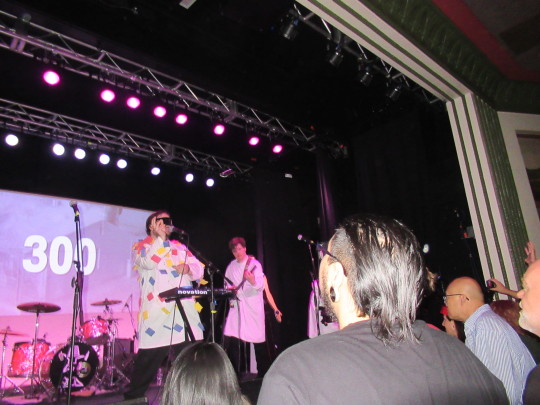

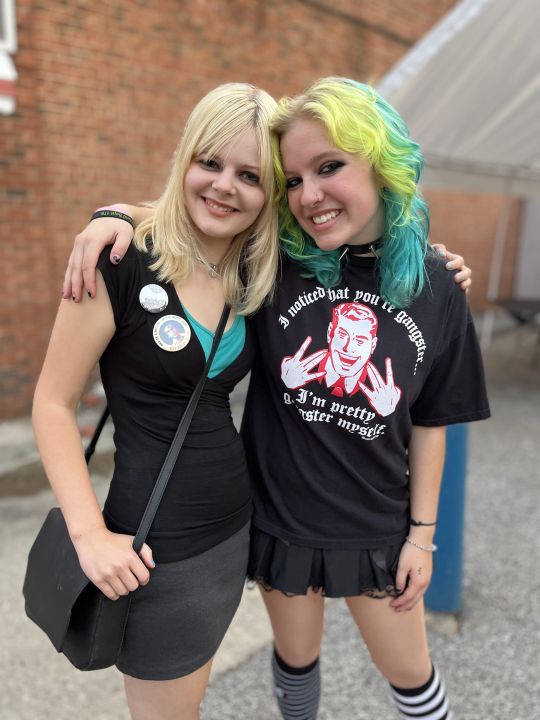







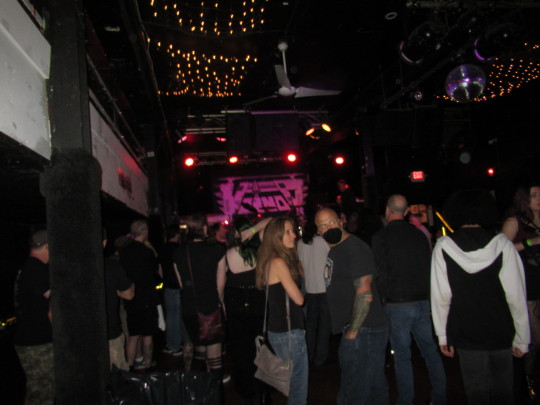
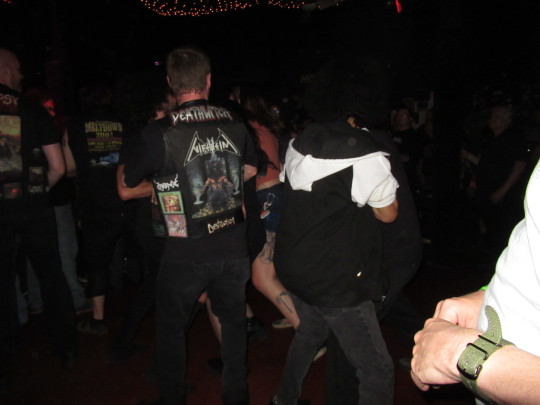
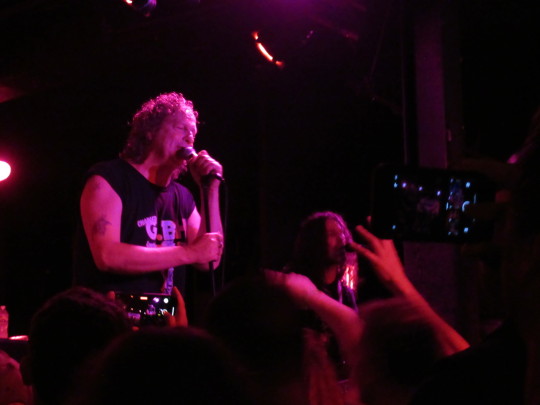
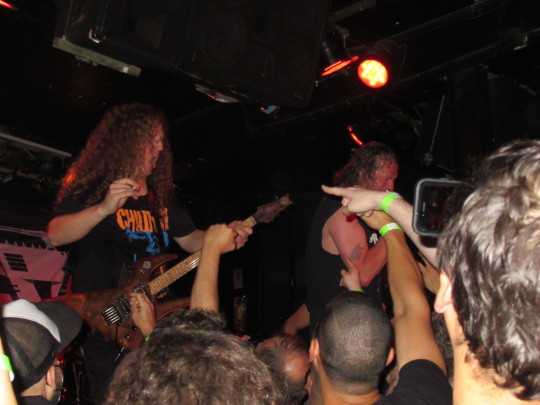
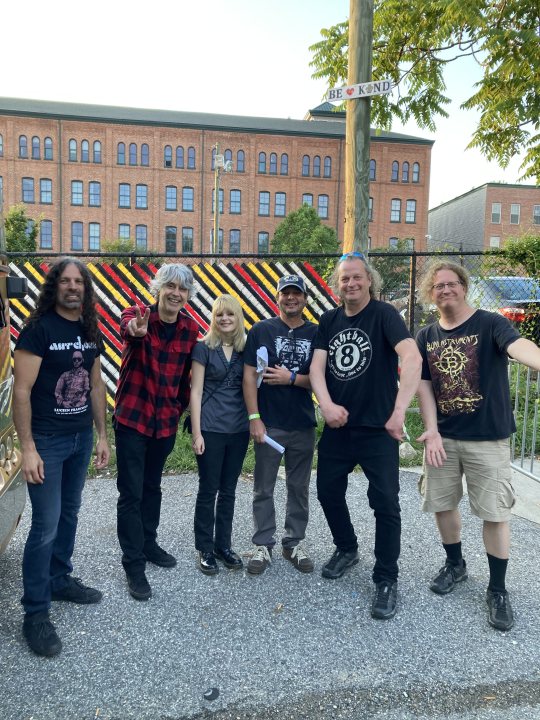

































Riot Grrrl Shizz?
Monday, July 24th, 2023Saw Le Tigre last week and have been procrastinating on posting about it. T’was fun, though I was at my peak of liking their music and Kathleen Hanna in general in high school, so I guess I was going in with more jaded eyes. Case in point: in between songs at one point she was talking about making “spaces” “safer” for non-”straight, white, cis” people. Which…kind of bummed me out for a few songs. Just a few weeks prior I’d been to a show in my town where one of the openers was a bunch of local kids, the oldest of which had just graduated high school. 3/5 of the members were girls, one of them sporting a super sick afro. The pit was all female at one point (and much more existent than crowd action at the Le Tigre show, where everyone danced tamely in place until they ended the night with “Deceptacon” and spontaneously everyone started mauling each other). But the main takeaway that I got from those kids’ show wasn’t some message of “inclusion”. My takeaway was that they kicked ass. Their music wasn’t sanitized; in fact, it was actually pretty vicious. And they didn’t ask permission from anyone to do what they did. They didn’t read some book that told them how to do it, either. They were playing because it was something they loved to do, and it was their passion towards kicking ass that defined them. It would be a disgrace to that passion to try and apply tokenism to them or that night. I thought it was cool seeing a lot of fellow young women in the crowd, but I also thought it was cool that, finally, my little town has a cool little ~space~ where all kinds of people can indulge in some Maximum Volume Kick Ass Rock-N-Roll. I wasn’t consciously scanning the crowd to see how many people looked like me or didn’t. I didn’t give a shit, because I was living in the moment. Concerts are events where all different kinds of people can become one with great music. And in that moment, when you’re losing yourself in guitar feedback and physical interaction, “female representation” and “visible queerness” don’t really matter. What the hell constitutes being “visibly queer”, anyways? Certain patches or pins? Certain styles of hair? Certain facial structures? Why can’t people just be people?
Maybe I would’ve been a little more impressed if I had less life experience and more of a grudge against the concept of men. And this is coming from a physically small female from the suburbs. If anyone should have a grudge against men, shouldn’t it be me? Too bad I try not to judge people based on features they can’t really change. I just judge them on whether their taste in music is good or not. Because the superficial construct doesn’t matter much. It’s the gray matter that matters.
Kathleen ended her spiel by saying we should consider solution-based approaches to the problems in our world. Which is totally correct. But she seemed unaware that the solution is already unfolding in gritty little scenes across the country. Hence why I was…a little bummed.
Tags:concerts, FEMINISM, Le Tigre
Posted in Reviews & Commentaries | No Comments »